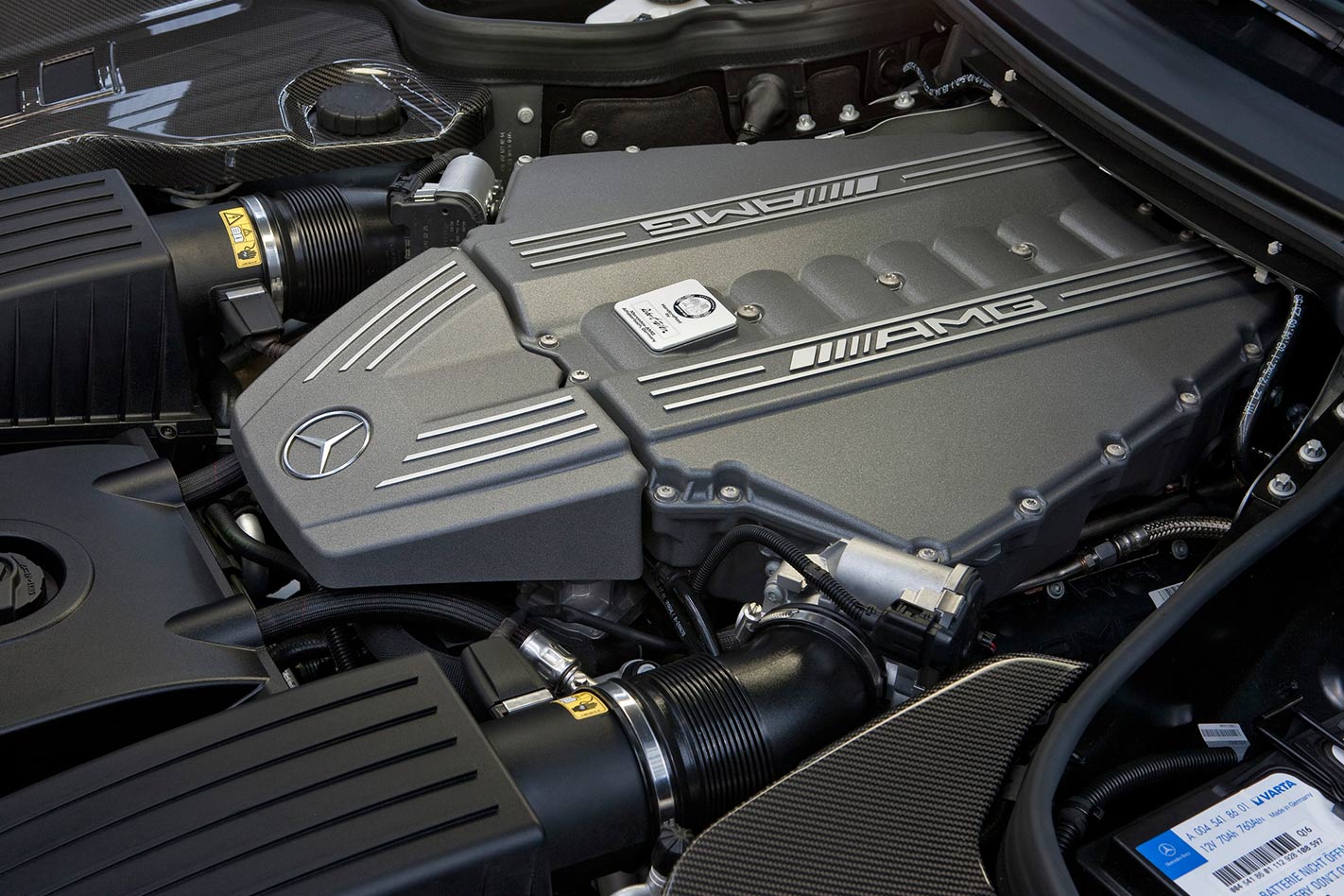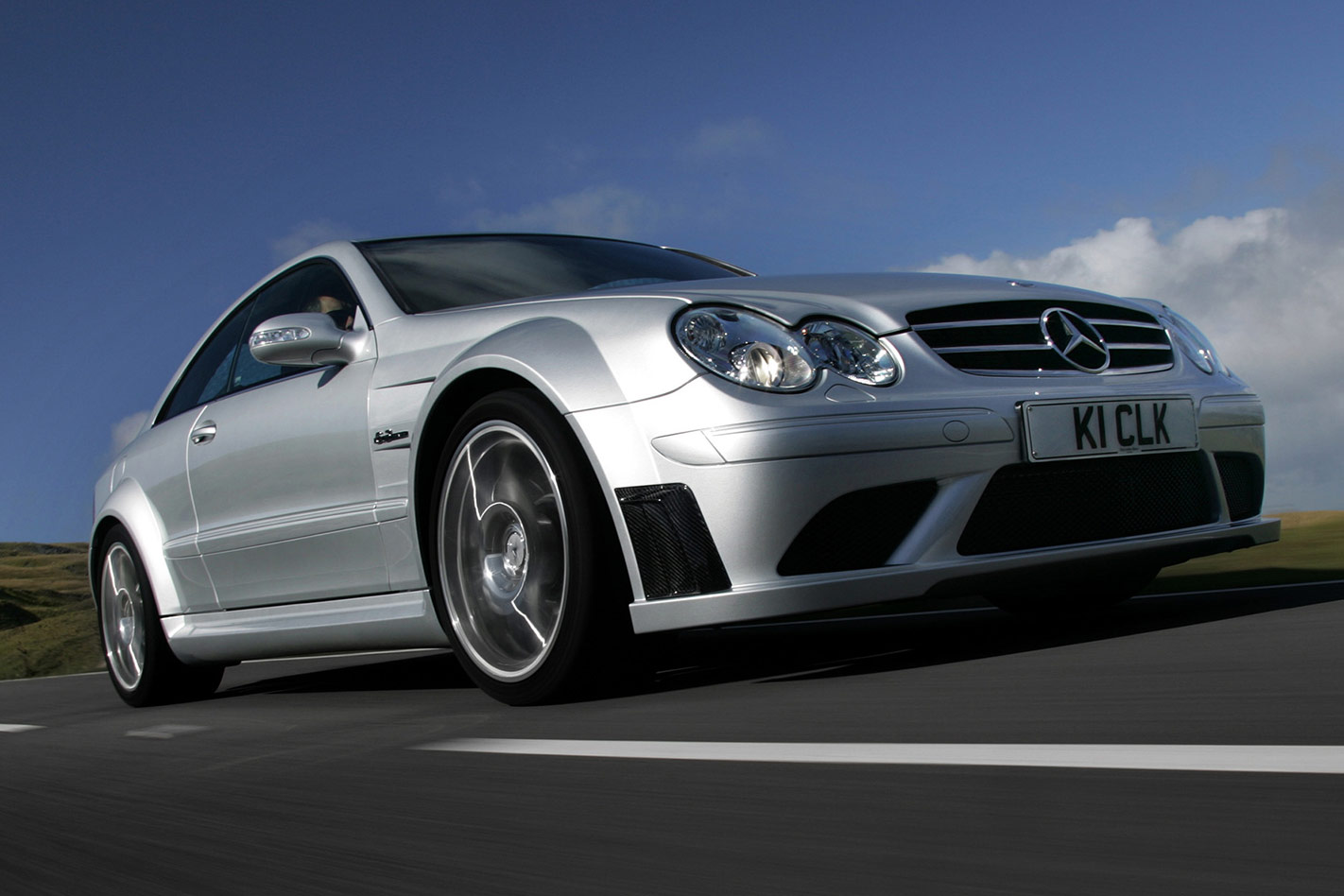Tobias Moers is about to exit stage left from AMG, set to head-up Lawrence Stroll’s rebuilding effort at Aston Martin.
The head of AMG since 2013, Moers has been a part of the company since 1994. From then until ’99 he was tasked with project management, before assuming responsibility for the main production series for the brand. In 2002 he became the head of full-vehicle development.

His influence on the Mercedes-Benz performance sub-division is undeniable, and his touch and style is stamped on the products that have left Affalterbach under his purview.
Here we decided to list the five which best define Moers’ time at AMG:
Mercedes-AMG SLS
There’s an argument that can be made that the SLS is the most important car in AMG’s history, and ergo the most important car of the Moers era.

It is the first model designed and built from scratch entirely by AMG, and has been a pundit and fan favourite ever since it was first revealed at the 2009 Frankfurt motor show.
A spiritual successor to the iconic 300 SL, and literal successor to the wild Mercedes-McLaren SLR, the two-door coupe was a revelation. Its design is iconic, and has aged superbly in the decade since it was shown to the world – a credit to the man behind the pen, Mark Fetherston. The hero piece of its timeless look is the gullwing doors, which AMG engineers decided must be manually-closed as they couldn’t justify the extra 41kg of heft an auto-shut system would add.
AMG claimed the M159 V8 under the bonnet was world’s most powerfully naturally aspirated production engine when it was first shown, with 420kW at 6800rpm and 650Nm at 4750rpm. The 6.2-litre atmo V8 is heralded as one of the last great free-breathing bent-eights. Despite being based on the M156 block, AMG gave the V8 its own engine code – M159 – to denote the significant changes made, including a dry sump.

The SLS was assembled largely by hand, with its chassis and aluminium body produced by Magna Steyr in Graz, before being transferred to Sindelfingen, Germany for assembly. The engine was entirely hand-built, naturally, at Affalterbach.
Moers is naturally rather fond of the SLS, once stating that it was a more complete car compered to its hypercar SLR predecessor, being not only faster on track in the hands of a pro driver, but also regular joes.
Going out of production in 2015, it was replaced by the AMG GT, which has since built on the success of the SLS, and is about to reach its zenith with the incoming Black Series variant.
SLS AMG OMG, indeed.
AMG CLK 63 Black Series
While technically not the first Black Series model– that was the SLK 55 – for many the CLK 63 Black Series is the car which best defines the limited-edition badge.

Launched in 2007, and based on the ‘regular’ CLK 63 AMG Coupe, the Black Series was a hardcore, track-orientated, brute of a thing. Only 500 were ever built, it had a tweaked M156 6.2-litre naturally aspirated V8 under the bonnet, which copped a larger inlet manifold, reworked exhaust, and remapped ECU to produce 373kW at 6800rpm and 630Nm at 5250rpm.
AMG threw the rear seats into the nearest bin during production, and the top speed limiter was lifted to a staggering 299km/h. Ooft.

There were also forged 19-inch alloy wheels at each corner, a wider track front and rear, an entirely reworked suspension set-up with an amount of manual adjustability that’d make your mind melt, and heaps and heaps of carbonfibre.
So proud of their creation was AMG management, that they proclaimed it a rival for the peerless Porsche 997 911 GT3. Just don’t mention the seven-speed auto gearbox.
Our sister mag CAR proudly proclaims this as the ultimate AMG. It’s hard to disagree.
W176 Mercedes-AMG A45
While its not the original hyper hatch, the W176 Mercedes-AMG A45 can be credited with lifting the genre to an entirely new level.

When it arrived in 2013, it blew its arch rival the Audi RS3 out of the water. The M133 was revealed with 265kW, before being updated in 2015 to pack a 280kW punch.
This four-pot terror made AMGs accessible. No, it wasn’t cheap, but it was a darn sight more affordable than the V8 hero cars in the range.
By introducing the A45, AMG was able to develop a family tree of sorts, where customers would start off in the A45, before progressing up into faster, more expensive models.

The M133 also showed that AMG was not a one-trick V8 pony, proving they were perfectly capable of producing world-beating engines regardless of cylinder count.
M177/M178 twin-turbo V8
It’s not a car, but it’s the most iconic product Affalterbach currently produces.
This ‘hot-vee’ 4.0-litre V8 is synonymous with modern AMGs, and has been heaped with plenty of well-earned praise.

However, when it first arrived in 2014, the M177/M178 had an uphill battle. Replacing the much-loved 6.2-litre naturally-aspirated V8 with a downsized turbocharged option was always going to be tough sell.
Wearing a different codename depending on its application, each unit is hand-built using Affalterbach’s “one man, one engine” policy.
Based on the 2.0-litre four-cylinder from the original A45, the engine is fundamentally two M133 blocks joined by a single crankshaft. It shares the same 90mm cylinder spacing and identical bore and stroke (83.0 x 92.0mm) as the four-pot, while the compression ratio has been increased to 10.5:1.
The biggest revelation when it was first revealed was the ‘hot-vee’ set-up, with a pair of BorgWarner turbochargers nestled in the valley of the 90-degree vee.

Currently the most-powerful M177/M178-powered vehicle is the AMG GT R, which produces 430kW and 700Nm, though a plug-in hybrid version with 600kW+ is rumoured to be just around the corner.
AMG One
This vehicle won’t be put into production until after Moers has left the building, but it perhaps best defines his ambition at AMG.
The AMG One (nee Project One) is Moers’ victory lap, taking the 1.6-litre turbocharged engine and hybrid powertrain from Lewis Hamilton’s W07 F1 car, and ramming it into a production vehicle.

The challenges are immense – this isn’t merely an F1-derived engine – but the exact same powertrain that made the W07 one of the greatest race cars of all time.
If the engineers at AMG can pull it off, the AMG One should have a combined power output of between 778-918kW when both the electric and combustion motors are working in sync.

There have been numerous delays to the project since it was first revealed in 2017, but when it finally rolls off a production line, it is Moers that should be given much of the credit.
Just 275 examples are slated for production, and all of them have already been sold.
If Moers can repeat the success he had at AMG while at Aston Martin, you should be very excited. We are.






